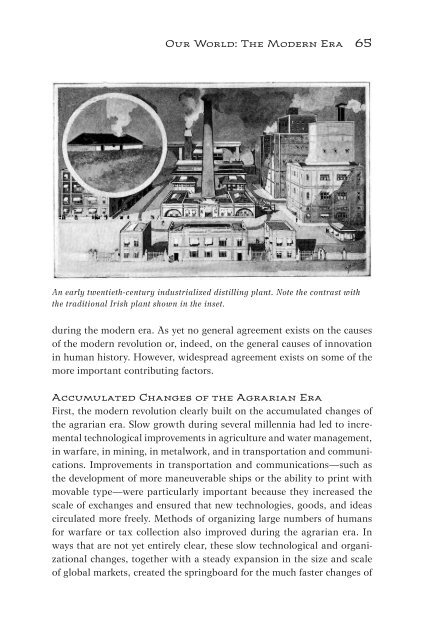This Fleeting World
This Fleeting World
This Fleeting World
You also want an ePaper? Increase the reach of your titles
YUMPU automatically turns print PDFs into web optimized ePapers that Google loves.
Our <strong>World</strong>: The Modern Era 65<br />
An early twentieth-century industrialized distilling plant. Note the contrast with<br />
the traditional Irish plant shown in the inset.<br />
during the modern era. As yet no general agreement exists on the causes<br />
of the modern revolution or, indeed, on the general causes of innovation<br />
in human history. However, widespread agreement exists on some of the<br />
more important contributing factors.<br />
Accumulated Changes of the Agrarian Era<br />
First, the modern revolution clearly built on the accumulated changes of<br />
the agrarian era. Slow growth during several millennia had led to incremental<br />
technological improvements in agriculture and water management,<br />
in warfare, in mining, in metalwork, and in transportation and communications.<br />
Improvements in transportation and communications—such as<br />
the development of more maneuverable ships or the ability to print with<br />
movable type—were particularly important because they increased the<br />
scale of exchanges and ensured that new technologies, goods, and ideas<br />
circulated more freely. Methods of organizing large numbers of humans<br />
for warfare or tax collection also improved during the agrarian era. In<br />
ways that are not yet entirely clear, these slow technological and organizational<br />
changes, together with a steady expansion in the size and scale<br />
of global markets, created the springboard for the much faster changes of


